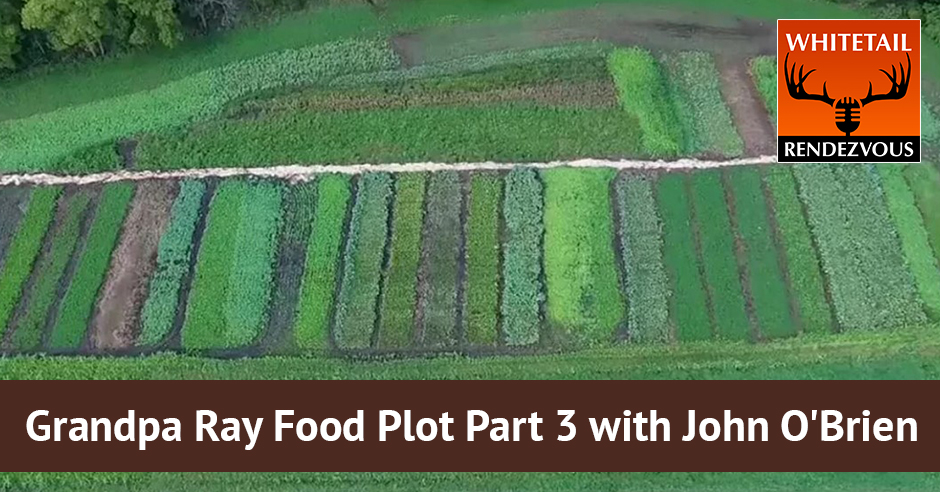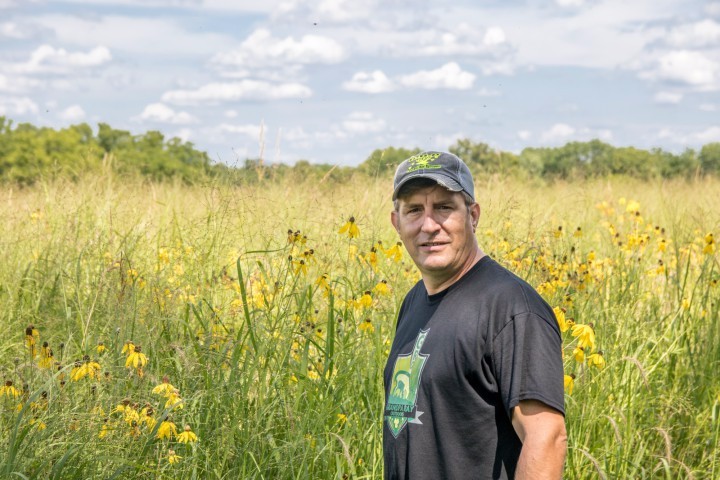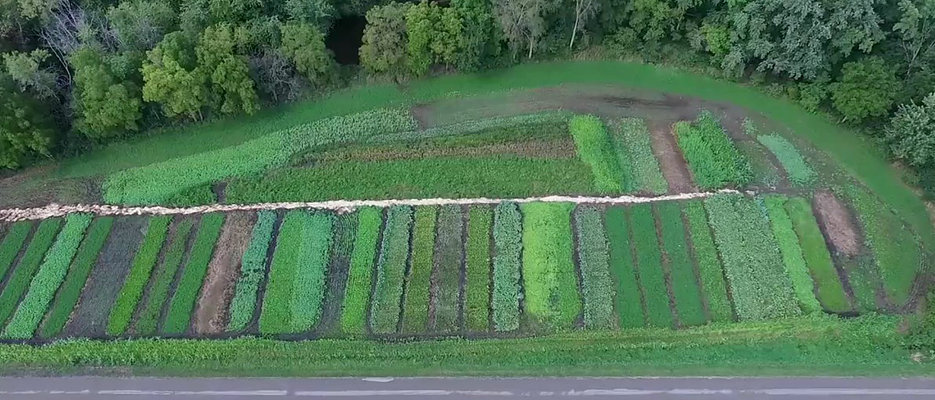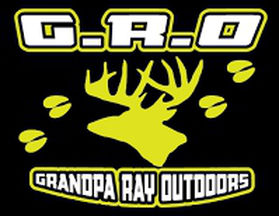
Our third and final segment about food plot with John O’Brien of Grandpa Ray is all about planting with a 365-day perspective. He lists the plants that you need to grow depending on the season, their maturation period, and how they affect deer nutrition. This is food plot education at its finest so be ready to learn beyond planting only for the hunting season. Remember, the short-term steps that you take have long-term effects.
—
Listen to the podcast here:
Grandpa Ray Food Plot Part 3 with John O’Brien
John O’Brion is going to wrap up this whole series. It’s going to be fun to see where the thing goes. Having said that, Grandpa Ray sets expectations for being a 365-food plotter. John, what does that mean?
The last time I checked, if your goal is to increase the deer numbers on your property throughout the whole year, there’s got to be food there. There’s got to be a bedding there. There’s got to be water. It’s pretty simple, yet the wildlife and the industry in the whole focuses on maybe one or two seasons a year. Usually, the focus is on from when the opening day of hunting season starts to when it closes. Again, that’s bad science. That is not where your brain should be wired. We would want to do our best as a goal to have something there every day, the short-term and long-term success.

January, February, March, the bucks had been through the rut. Those are either bred or not bred. Throw a lot of food to a growing fawn. What do we need during those months to make sure bucks and does are getting the right nutrition?
No matter if we’re in north of Madison, Wisconsin, Tallahassee, Florida or out in Colorado, there’s Mother Nature that comes into play. In the northern climates, you get crew at times, but two feet of snow, twenty below zero, even having a higher amount of challenges there. My focus is when hunting season is done, do you have sources of supplemental stockpile in the forages? In the industry, if people are familiar with turnips, are they familiar with other species of forages like rutabaga, maybe sugar beets, weeds, things like grains or gums, things like millet, which aren’t as desirable during the fall season? All suddenly when the deer is having a hard time walking through the deep snow and wants to eat whatever’s the easiest at that point in time, there are certain things that we can focus on to give that energy that’s needed in those stressful conditions. Many people think if their goal is to grow healthy big deer, they focused on the fall. When that buck has dropped its antlers, and it could be January, February in many areas or even before then. You mentioned when the ruts done. The buck’s reserves are tapped out and he’s drained.
Short-term thinking affects long-term success. Share on XThe big thing is you want to keep it maintained or replenish it. The main goal is we do not want a deer, neither buck or doe or fawn from the previous crop. Our goal should be is try to reduce the amount of weight they lose throughout the winter. It’s next to impossible no matter where you live to put on weight. If you don’t lose as much weight in body condition, that’s what’s going to happen. The term is called compensatory game. Instead of having to replenish those bones with the calcium, proteins and nutrients, they’re able to move and you don’t have to replenish it yourself. That’s what’s going to happen with those added nutrients that are out there, whether it be from supplemental sources in antler development. That’s how you actually grow in this long-term or even short-term.
If your goal is to put extra inches on a rack, then reduce the amount of weight that’s lost after the hunting season. Same thing with does. That fawn’s not going to be dropped for another month or two. Especially if it’s got twins or triplets inside her, a lot of the nutrients that she’s consuming is going toward the fawns. If you have a fawn that’s born a little bit bigger, if that doe was lactating every year once that she drops the fawns, that fawn’s going to be bigger, that fawn can be healthier and that carries the growth they are dictated, which carries on route that way. People don’t think about it. People overlooked that. That’s what I want to emphasize in this segment. Short-term thinking affects long-term success.

Here’s the word again, a plan and a calendar. It’s a food plot. These are all laid out. You got what you got unless you’re going to cut new many plots or kill plots in. I recommend you do them every single year when you move your stand because things change. In saying all that, January through March, this is what you’re going to do. That land has to be prepared before the snow falls. The seed has to be put in there. You have to know what the deer need so you can do that months and months ahead because we come out of January, February, March then we’re into April, May and June. Gestation period for fawn is approximately 200 days, 201 days. Having said that, you just count. That’s all you have to do when that fawn drops. The mother needs food now for herself because she’s got to replenish what she lost feeding a healthy fawn and they need water. Fawn needs cover from predators. You look at all this and then during those months, what should they be eating? What should they be ingesting during April, May and June?
Here’s what I’ve encouraged people to do. A good number of people do plant perennials but that’s usually about a third, maybe in some cases, up to half the acreage. There are guys that plant corn and beans. Those would go on the ground in May and June in most areas in the United States. What I strongly recommend is plan a soil builder, you’re fixing nature to smothering weeds, at least in these mixes that they recommend are very desirable nutrient-wise. When you always set aside about a third of your acres every spring with a spring crop, which in theory will be considered a cover crop is helping you long-term with your soil health, your food plot health. In short-term, that’s the most crucial time. Everybody thinks about the fall, but the most crucial time is that spring flush. You want to have a diversity of species. There are a lot of species we can plant that are very nutritious and effective. Then you’d come back in these areas and then you plant because think about keeping the ground covered. There’s the erosion. Makes sure a conservationist reduces your input cost, your fertilizer bill that you have expand at your local co-op feed store, farm center. That’s the area that people overlook that’s usually important.
Everybody thinks about the fall, but the most crucial time is that spring flush. Share on XI’m going to drive into June, July and August, it depends on what zone are you in the country and then it starts to pick up its head on July. Then August starts towards maturity parts of September. The high by the fourth of July is known by the adage for corn in Wisconsin. I always heard it. It’s doing that well by that time you’re going to have a pretty good crop. The corn hasn’t matured, so what are the deer eating? What can I boost my herd with during the heat months? You’ve got some heat stress. You’ve got a lot of challenges during the summer that you don’t think about. Let’s talk about what we’re putting in the ground on June, July and August. What’s in the ground so the deer can eat it during those months?
There’s a third of acres with the perennials in there. The industry is focused on the chicken on the land over. There are other species of clovers and the other thing I’m bringing more into play, I’m encouraging people to do is use more alfalfas, use more annual clovers. Alfalfas are more drought tolerant than a lot of the clovers. It gets into July, August, September, less rain, those roots, especially alfalfas, will go deep. They’ll handle more of these warm conditions, handle this heat stress. Certain species of annual clovers are drought-tolerant, really grace tolerant or regrow more rapidly. On the annual clovers, there are so many people who look on to summer flowers. Things like buckwheat, some people say they won’t touch. Other people say they go nuts for it. Other new species that people are so used to using forage beans. That’s one option.

The corn and the deer, if they’re even eating that, that’s the force from the corn that tells you that you don’t have much healthy nutritious out there, but things like sun health and they’ve aggressively regrown. It’s also a great agronomically. There are a few other things too like we mentioned the annual clovers. Even some of the forage can be an advantage. Some of the forage and natives that are instantly mixed can act as a supplemental source of energy. If you’re going to be using beans in the rotation, I would recommend using beans that grow really fast, that’s effective, that can get on the ground really quick before that summer heat stress where you already got roots underneath those beans.
I love beans that dry down fast where you can oversee annual clovers into them. When those beans are consumed, whether the deer hammer down the leaves and the stems, or if they even make it into the fall, you’ve got pods. I also want to have some late season, winter seasons feed there in the brassicas. I am wired different. I want people to be wired different when it comes to your strategies with planting beans. Beans are very great summer crop. Cowpeas are also effective summer supplemental food sources that many people overlook.
We’re rolling into September, October, November hunting season. Whatever in the ground is going to grow and if you done it right, there are some good cards. You’ve got food, you’ve got kill plots, you get all these things working for you, but sometimes things mature before you want them to be. Because of that, you can get into turnip situation, radish situation where they mature too early and there’s no frost so the sugar never cooks off. The nutrition goes away and the drug goes away, so you have to think about that. John, what do we want to make sure we got covering our ground available to? We’re looking for bucks now and we want to keep those there so the bucks would come by during the rut. Help me out here.
This is where my knowledge of nutrition and grazing comes in. Many people in the wildlife industry replant fast growing forages. I used to check the calendar. When’s your first frost date? It’s October 10th so come back in 60 days. It means August 10 is probably your most effective planting by date. Before then, your turnips mature in 60 days. Some of the brassicas mature in 40 to 60 days. They’re mature. That’s what happens. Even if you can start getting some sugar uptake in the plant and then the matures become less palatable, anything mature goes into reproduction. You’ve got in your nutrient values plant. Do people look at that? We use more diverse blends. I don’t want to have all my species in a blend. They’ll mature at the same time. I want things to grow fast. Some will mature in 42 days. Some will mature in 60 days. Some, like rutabaga, might mature in 90 days.
That’s how you draw deer. That’s how you hold deer. That’s how you keep the deer nutritionally. You plant one species then all sudden, it grows. The proteins drop. The minerals drop. You might not know it. They know it. The deer don’t lie. Where are they going to go? Plant one, two species that grow really fast. After that 60-day maturity point, your neighbors are doing things right. The deer are on your neighbors. People do not think about planting date or the species. They look at the tag. Maybe it doesn’t mean much to them. You know when these forages mature. Did they all mature at the same time? Did they mature in different rates? That’s something you need to get educated on. That’s a great challenge that I’m having for everybody today: plant, bio, diverse mixes and mature at different rates. That’s nutrition. That’s science. That’s good management.
If they want to get ahold of you, how do they do that?
They can call me at (608) 235-0628, Monday through Friday, 8:00 AM to 5:00 PM Central Standard Time. You can email me at OBrion@Gmail.com. For other information, you can check me on my website, www.GrandpaRayOutdoors.com. You mentioned a few times in the past about YouTube. I’ve got 50, 60 videos on YouTube. A lot of them are teaching videos. Want to learn? You’ve heard me ramble a little bit. Want to learn more at your own pace and your own time? That’s Grandpa Ray Outdoors out on YouTube.
With that, we’re going to wrap up this certain final statement with John O’Brion with food plots. John, you have a great time in Madison. As always, it’s a pleasure.
Thanks, Bruce. Good luck to everybody out there.
